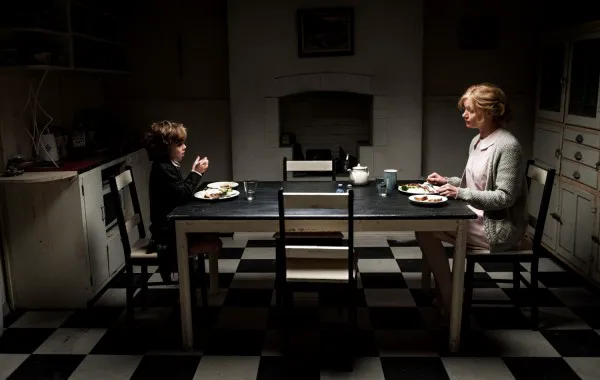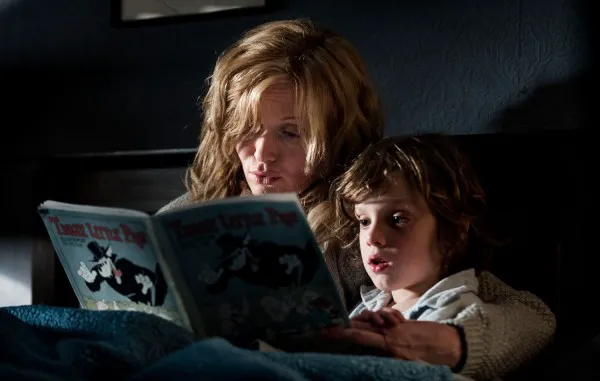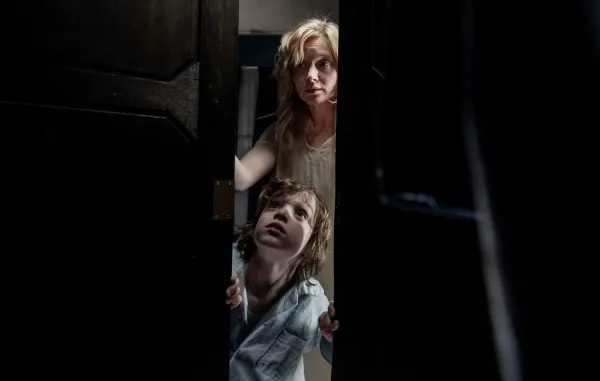Delving into the Darkness: A Review of “The Babadook”
In our “Terrifying Cinema” section, we present reviews of horror films that, for various reasons, haven’t achieved widespread theatrical release. Today, we explore “The Babadook,” a film that transcends typical horror tropes to deliver a truly unsettling and thought-provoking experience.
Amelia (Essie Davis) has carried the weight of grief since the day her son, Sam (Noah Wiseman), was born. On the way to the hospital, a car accident claimed her husband’s life, forever intertwining joy and tragedy. Years later, Sam is seen as a troubled child, obsessed with monsters and prone to outbursts. One night, he asks Amelia to read him a story about the Babadook, a creature lurking in the shadows, driving people to commit terrible acts. From that moment on, Sam’s anxieties spiral, and Amelia slowly begins to unravel as she, too, is haunted by the Babadook.

Beyond Jump Scares: The Art of Psychological Horror
The horror genre might seem easy to master – just splash the screen with gore or build suspense with dark visuals and jarring music. However, true fear is deeply personal, making it impossible to create a horror film that universally terrifies. This is why horror films that skillfully employ genre conventions while exploring profound and universal themes are particularly captivating. “The Babadook” stands out as one of the most significant horror films in recent years for precisely this reason.

A Monster of Grief: Unpacking the Layers
“The Babadook” is ingeniously constructed. Beneath the surface of a classic monster-under-the-bed story, reminiscent of “A Nightmare on Elm Street” and “Candyman,” lies a poignant drama about a widow struggling to cope with the loss of her husband. Amelia avoids celebrating Sam’s birthdays, remains emotionally distant, and subconsciously blames him for her husband’s death. She shuns romantic relationships, and any mention of her late husband triggers anger and resentment.

Writer-director Jennifer Kent uses the Babadook as a catalyst, amplifying Amelia’s repressed emotions to an extreme while maintaining their relatability. Kent, despite being a relatively new filmmaker (with only a TV series episode and a short film to her credit), masterfully achieves this balance without resorting to heavy-handedness. The film seamlessly weaves together themes of suppressed grief, forced maturity, and the alternating pangs of resentment and guilt within the framework of a supernatural horror story. The final scene, when viewed through the lens of the film’s deeper meaning, serves as a beautiful and comprehensive epilogue to any story about overcoming tragedy and embracing a new beginning.
Technical Brilliance on a Budget
Despite its modest $2 million budget, “The Babadook” boasts a remarkably atmospheric visual style. The film features skillful use of light and shadow, intriguing camera techniques (note the scenes depicting Amelia’s insomnia), and a palpable sense of unease. And who can forget the chilling “ba-ba-ba dook-dook-dook!” that heralds the monster’s arrival? “The Babadook” is a true gift for horror aficionados who appreciate substance and a powerful reminder to producers, directors, and writers that horror films are not simply a collection of tired clichés. It’s time to admit that some filmmakers simply don’t know how to craft a truly terrifying and meaningful horror experience.